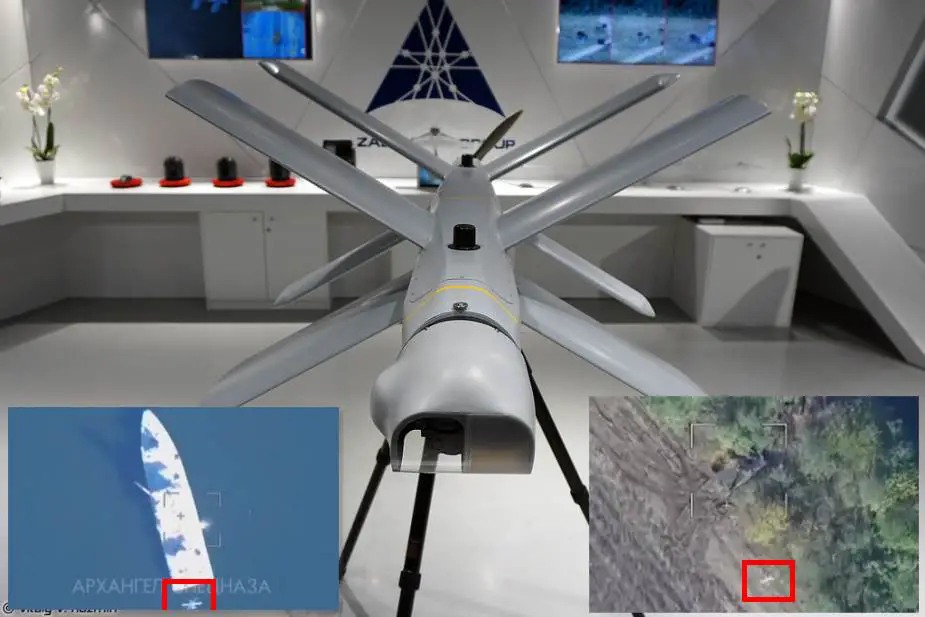- Army
- Conflicts in the world
- Israel - Iran conflict 2025
- Pakistan - India Conflict 2025
- Russia Ukraine War 2022
- Libya conflict day by day
- HAMAS - Israel War 2023
- Operation Serval in Mali French Army
- Sangaris operation Central African Republic
- Sangaris opération militaire République Centreafrique
- Ukraine - Russia conflict
- Syria conflict news
- Defence & Security Industry Technology
- Armies in the world
- Analysis Defense and Security Industry
- Conflicts in the world
- Navy
- Air
Discover Russian Lancet suicide drones used to strike Ukrainian land and naval targets
According to videos published by the Russian Ministry of Defense, the Russian armed forces deployed in Ukraine use the latest generation of Russian-made Lancet loitering munitions also called suicide drones to strike M777 155mm self-propelled artillery weapon systems, light tactical and armored vehicles, and an unmarked civilian car used by Ukrainian armed forces. Recently, the Lancet drone was also used to attack a Ukrainian navy ship.
Follow Army Recognition on Google News at this link

In the video released by the Russian Ministry of Defense, we can clearly identify the use of Lancet suicide drones to destroy naval and ground targets of the Ukrainian armed forces.
In the video released by the Russian Ministry of Defense (MoD), the information published by Russian MoD didn't mention the type of drones uses to target Ukrainian forces, but on the footage, we can easily identify the design of the Lancet drone which is very unique.
In June 2022, the Russian defense company ROSTEC announced that the Lancet drones are now used for combat operations in Ukraine. many footages were released on the Internet and Social Networks showing the use of Lancet drones by Russian armed forces to target an S-300 air defense missile system, FH70 and M777 towed howitzers as well as M109 used by the Ukrainian armed forces. On November 4, 2022, a video was released on the Russian social network VK showing the use of the lancet drone to attack a Ukrainian patrol ship from the Guyrza Project type.
Russian company ZALA Aero, which is part of Kalashnikov Group has developed the KUB and Lancet loitering munition also kamikaze drones. The Lancet drone is designed to be used to conduct reconnaissance and strike missions and was unveiled for the first time in 2019. Two versions of the drone are available, the Lancet-1 and Lancet-3.
The Lancet-1 is the smaller version which carries 1 kg of payload and has an endurance of 30 minutes. The Lancet-3 is the biggest version which has a maximum payload of 3 kg, an endurance of 40 minutes, and can fly at a maximum speed of 110 km/h. Both Lancet drone has the same design which has the shape of a missile with the optics in the nose section. There are two groups of X-shaped wings, one located in the middle of the front fuselage and the other at the end.
The Lancet drone is electrically powered and a two-bladed propeller unit is mounted at the rear of the fuselage. It features optical-electronic guidance as well as a TV guidance unit, that allows the munitions to be controlled on the terminal stage of flight. The drone also features intelligence, navigation, and communications modules.


























